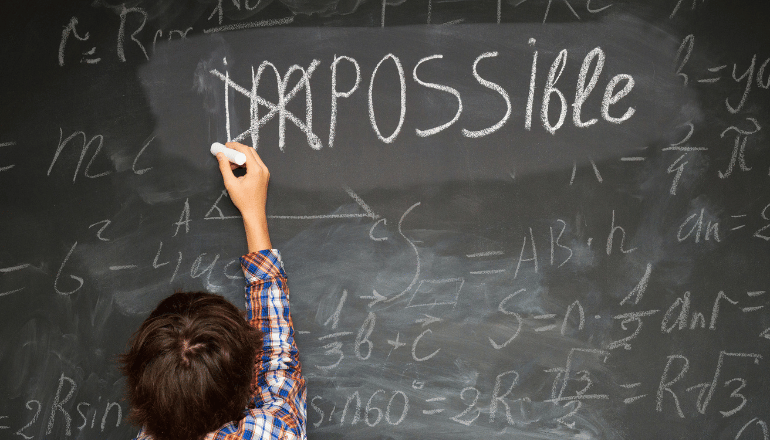Introduction: The Advent of Global Classrooms
The landscape of education is rapidly evolving, with technology playing a pivotal role in transcending geographical and cultural barriers. Collaborative Online International Learning (COIL) emerges as a beacon of innovation, facilitating global connections that enrich the educational experience for both teachers and students. By integrating COIL into the curriculum, educators can offer students a window into diverse cultures, ideas, and perspectives, fostering a deeper understanding of global interconnectedness.
Understanding COIL: Bridging Classrooms Across Continents
COIL is an educational approach that links classrooms from different parts of the world, leveraging technology to foster collaborative projects and discussions. This model empowers students to develop critical thinking, cross-cultural communication skills, and a global mindset, preparing them for a more interconnected world.
The Structure of COIL Projects
A COIL project is characterized by a collaborative partnership between educators from different countries who work together to design a curriculum that incorporates intercultural exchanges and cooperative learning. These projects are scaffolded through a series of phases, including planning, execution, and reflection, ensuring a structured and impactful learning experience.
Implementing COIL: A Structured Approach
Successfully integrating COIL into educational practices requires careful planning and commitment. Here’s a closer look at the structured approach to COIL implementation:
Phase 1: Preparation & Planning

The success of a COIL project hinges on meticulous preparation and planning, with a strong emphasis on coordination between the partnering educators. This initial phase sets the groundwork for a seamless and productive collaboration, encompassing several critical steps:
1.1. Finding a Partner and Initial Coordination:
- Platforms for Connection: Teachers use platforms like Class2Class.org to find and connect with potential COIL partners. This involves browsing educator profiles, reading about their interests, and assessing compatibility in educational goals and subjects.
- Initial Contact: Once potential partners are identified, teachers reach out through the platform to express interest in collaboration. This initial communication is crucial for establishing a rapport and mutual understanding.
1.2. Scheduling Collaboration:
- Availability: Teachers share their availability, taking into account different time zones, to schedule regular planning meetings. This might involve using scheduling tools or shared calendars to find common times that work for both parties.
- Regular Check-ins: Agreeing on a schedule for regular check-ins and updates throughout the project planning and implementation stages ensures ongoing alignment and adaptability.
1.3. Choosing Communication Channels:
- Preferred Tools: Deciding on the communication tools and platforms (e.g., email, Class2Class.org’s communication features, instant messaging apps) for both planning phases and student interaction is essential. This decision should consider ease of use, accessibility, and the ability to support the types of interactions the project requires.
- Backup Channels: Establishing backup communication methods to address potential technical issues can prevent disruptions in collaboration.
1.4. Aligning on Project Topic and Objectives:
- Interests and Curricular Goals: Partners discuss their educational interests, curricular goals, and the learning outcomes they hope to achieve through the COIL project. This conversation helps in selecting a project topic that is engaging and beneficial for students from both classes.
- Cultural Sensitivity and Inclusivity: Ensuring the project is culturally sensitive and inclusive, considering the diverse backgrounds of the students involved, is paramount. This includes discussing and planning how to introduce students to each other’s cultures respectfully and engagingly.
1.5. Logistics and Resources Planning:
- Technology Needs: Identifying the technological needs for the project, such as specific software or platforms for collaboration, and ensuring students have access to these tools.
- Material Sharing: Planning how materials, resources, and work will be shared and stored. This might involve using cloud storage (e.g. Google Drive), educational platforms (e.g. Padlet, Wakelet, etc.), or Class2Class.org’s project management features (i.e. Project Board).
1.6. Setting Expectations and Roles:
- Clarifying Roles: Clear delineation of responsibilities for each teacher, such as who will lead on certain aspects of the project or how feedback will be given to students.
- Student Engagement: Discuss strategies to ensure student engagement and participation, setting clear expectations for student interaction and collaboration.
Phase 2: Implementation & Collaboration


With a solid plan in place, it’s time to dive into the heart of your COIL project:
2.1. Introducing the project to students:
- Orientation sessions: Host virtual sessions to introduce students to the COIL project, explaining the goals, timeline, and expected outcomes. Use this opportunity to build excitement and address any questions.
- Cultural exchange activities: Begin with activities that promote cultural exchange and understanding, helping students to get to know their international peers. This could include sharing presentations about their home countries, cultures, and daily lives.
2.2. Facilitating student collaboration
- Collaborative tools: Implement the chosen digital tools for communication and collaboration among students. Ensure all students are trained or familiarized with these tools to prevent technical challenges.
- Group work: If possible, organize students into mixed teams, combining students from both classes, and assign tasks that encourage dialogue, collaboration, and collaborative problem-solving..
- Regular check-ins: Schedule regular check-ins with students to monitor progress, address challenges, and provide guidance. Encourage students to share their experiences and insights from collaborating with international peers.
2.3 Project Execution:
- Milestone Planning: Break the project into manageable milestones with specific deadlines to keep teams on track.
- Feedback Loops: Establish a process for providing ongoing feedback to student groups, helping them refine their work and deepen their learning.
- Cultural Reflection Sessions: Incorporate sessions for students to reflect on their cultural learnings and share their experiences with the broader class, fostering an environment of mutual respect and understanding.
Phase 3: Reflection & Assessment


As your COIL project comes to a close, it’s crucial to dedicate time for reflection, assessment, and celebration:
3.1 Student Reflections:
- Reflective Essays or Presentations: Ask students to create individual or group reflections on their COIL experience, focusing on what they learned about the subject matter, collaboration, and intercultural communication.
- Discussion Forums: Host facilitated discussions where students can share their experiences, challenges faced, and how the project has impacted their understanding of global perspectives.
3.2. Assessment of Project Outcomes:
- Evaluation Criteria: Clearly define the criteria for evaluating the project’s success, including academic learning objectives, collaboration effectiveness, and intercultural learning outcomes.
- Peer Review: Implement a peer review process where student teams provide feedback on each other’s work, fostering a sense of community and collaborative learning.
- Teacher Assessment: Conduct a comprehensive assessment of project outcomes, providing detailed feedback to students on both their academic achievements and collaborative efforts.
3.3. Project Debrief:
- Debrief Session: Organize a debriefing session with all participants to discuss the project’s outcomes, challenges encountered, and lessons learned. This session should celebrate the students’ hard work and achievements.
- Feedback: Gather feedback on the COIL experience from both students and teachers. Use this feedback to inform future COIL projects, identifying areas for improvement and best practices.
3.4. Showcase and Celebrate:
- Showcase of Work: Create opportunities for students to showcase their projects to the wider school community or on Class2Class.org, highlighting their collaboration and learning.
- Certificates of Participation: In recognition of the effort, creativity, and learning achieved through the COIL project, Class2Class.org awards certificates to both teachers and students. These certificates serve as a valuable addition to professional and academic portfolios, highlighting participants’ commitment to global education and intercultural collaboration.
Challenges and Solutions in COIL Implementation


While the benefits of COIL are significant, educators often encounter challenges that can impede successful implementation. Addressing these challenges head-on, with innovative solutions, is crucial:
Challenge 1: Identifying Compatible Partners
Solution: Leverage the Class2Class.org matching algorithm, designed to connect educators based on teaching subjects, interests, and desired project outcomes. Additionally, participate in COIL-specific forums and webinars on Class2Class.org to network with potential partners who share similar educational goals and teaching philosophies.
Challenge 2: Overcoming Language Barriers
Solution: Implement bilingual projects where students contribute in both languages, encouraging language learning and mutual understanding. Use translation tools and assign bilingual students or teaching assistants to facilitate communication. Incorporate visual and multimedia resources that transcend language differences, such as videos, infographics, and pictorial instructions.
Challenge 3: Technological Disparities and Access
Solution: Choose universally accessible and low-bandwidth tools to ensure all participants can engage equally. Provide alternative assignments or offline projects that can be shared digitally by teachers for students facing significant access issues.
Challenge 4: Synchronizing Collaborative Work Across Time Zones
Solution: Opt for asynchronous collaboration methods allowing students to contribute at times convenient to them. When synchronous sessions are necessary, rotate meeting times to share the inconvenience of unusual hours equitably. Utilize a shared online calendar to mark deadlines and important dates, adjusting for time zone differences.
Challenge 5: Navigating Cultural Sensitivities and Misunderstandings
Solution: Provide cultural competency training for students and teachers, highlighting common cultural differences and communication norms. Facilitate initial ice-breaking activities focused on sharing and celebrating cultural diversity. Encourage open dialogue and have a clear process for addressing and learning from misunderstandings.
Challenge 6: Maintaining Momentum Post-Project
Solution: Plan follow-up activities or projects to continue the partnership. Encourage students to reflect on their COIL experience through blogs, presentations, or digital portfolios. Establish a mentorship program where past participants support new COIL participants, fostering a community of ongoing learning and collaboration.
Transform Your Classroom with COIL and Class2Class.org
COIL offers a transformative approach to education, breaking down geographical barriers and opening up new horizons for students and teachers alike. By embracing this innovative model and leveraging the support and tools provided by Class2Class.org, educators can enrich their teaching practices with meaningful international collaboration.
Embrace the opportunity to bring the world into your classroom. Register for a free account on Class2Class.org and embark on a journey that transforms your educational approach, fostering global connections and understanding among your students. Start your COIL journey today and be a part of creating a more interconnected and empathetic world.

